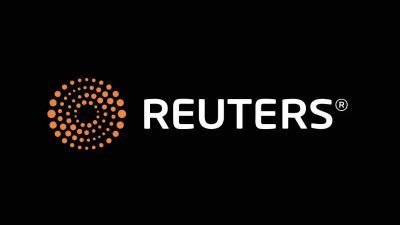July 15 (Reuters) - Goldman Sachs' (GS.N), profit more than doubled in the second quarter and beat analysts' estimates on strong debt underwriting and fixed-income trading, but slipped from a bumper first quarter when earnings were the highest since 2021.
The resilience of the U.S. economy has given corporate executives the confidence to pursue acquisitions, debt sales and stock offerings.
"We are pleased with our solid second quarter results and our overall performance in the first half of the year, reflecting strong year-on-year growth in both Global Banking & Markets and Asset & Wealth Management," CEO David Solomon said in a statement on Monday.
Earnings were $3.04 billion, or $8.62 per share, for the three months ended June 30, about 3% higher than analysts' average expectation of $8.34, according to LSEG.
The beat was narrower than in the prior two quarters, when Goldman's profit was 35% and 56% higher than estimates.
Shares were last marginally up in volatile premarket trading.
Stephen Biggar, an analyst at Argus Research, attributed the stock performance to the narrow beat and investment banking underperforming peers such as JPMorgan Chase (JPM.N), and Citigroup (C.N)
Goldman's investment banking fees rose 21% to $1.73 billion in the quarter. Fees earned from advising on mergers and acquisitions (M&As) jumped 7%, while debt and stock underwriting climbed 39% and 25%, respectively.
Last week, JPMorgan reported a 46% jump in investment banking revenue while it jumped 60% at Citigroup.
Goldman's profit in the second quarter last year was also hit by writedowns related to GreenSky, its former fintech business that Goldman has since sold.
After a foray into consumer banking flopped, Goldman has refocused on its traditional mainstays - investment banking and trading.
Investors have supported the move, pushing the Wall Street titan's stock up 24.4% so far this year, compared with rivals Morgan Stanley's (MS.N), 11.6% gain and JPMorgan Chase's (JPM.N), 20.5% climb.
Goldman's revenue from fixed income, currency and commodities (FICC) trading rose 17%, boosted by FICC financing, which makes loans to institutional investors and others.
FICC financing revenue climbed 37% to $850 million, just a shade below the record $852 million in the first quarter, driven by mortgages and structured lending.
Goldman has significantly increased short-term loans to private funds as part of a push since 2021.
Equities trading revenue increased 7%. The asset and wealth management unit, which manages money on behalf of wealthy and institutional clients, reported 27% higher revenue in the second quarter.
The bank oversees $2.93 trillion of assets. In May, it signed a deal to manage the $43.4 billion pension fund portfolio of parcel delivery giant UPS (UPS.N).
Platform solutions, the unit that houses some of Goldman's consumer operations, reported 2% higher revenue.
The bank's provisions for credit losses were $282 million for the second quarter, compared with $615 million a year earlier.
CREDIT CARDS
Goldman Sachs took a $58 million charge on the General Motors (GM.N), credit card business in the second quarter as it prepares to exit the partnership. Goldman had decided to sell the GM card loan portfolio last year.
GM is in talks to replace Goldman with Barclays (BARC.L), a source familiar with the matter told Reuters in April.
A similar partnership Goldman has with tech giant Apple (AAPL.O), is facing an uncertain future.
Credit cards were an important facet of Goldman's consumer strategy, but it decided to retreat from retail banking after big losses.
In its annual stress test, the Federal Reserve indicated credit cards could be a headache for banks. The potential losses on Goldman's credit card loans were among the worst under the central bank's hypothetical scenario.
Still, Goldman raised its quarterly dividend to $3 per share versus $2.75 earlier.
Reporting by Niket Nishant in Bengaluru and Saeed Azhar in New York, Editing by Lananh Nguyen and Sriraj Kalluvila
